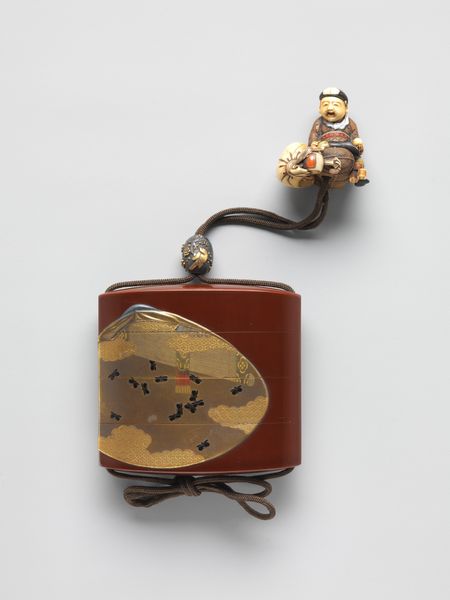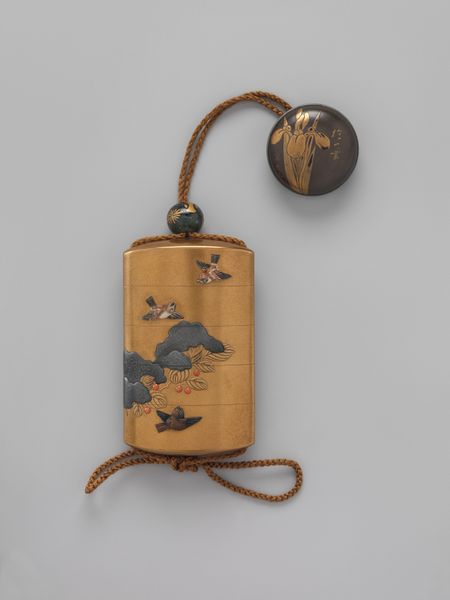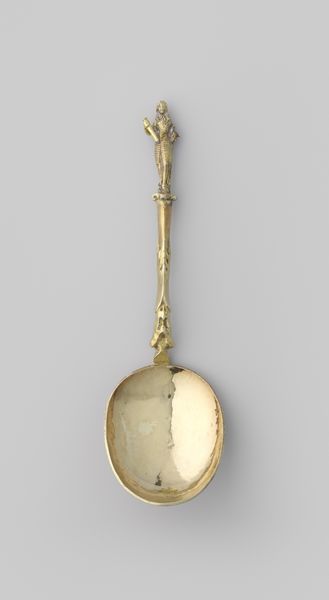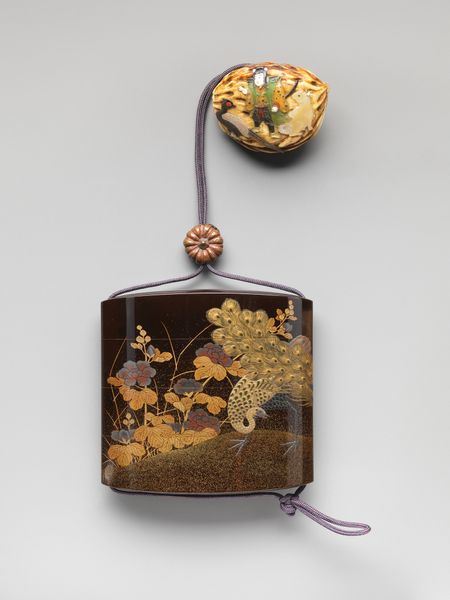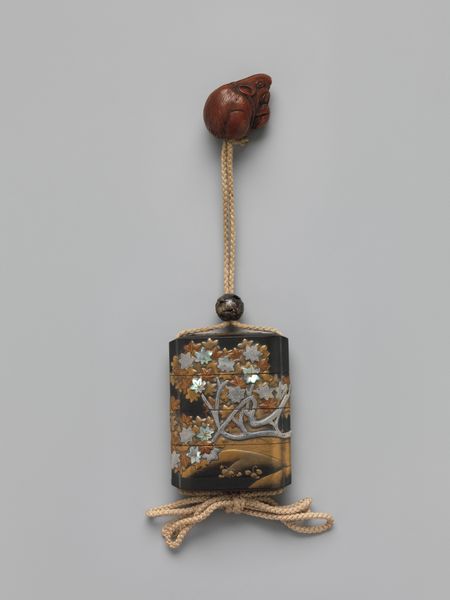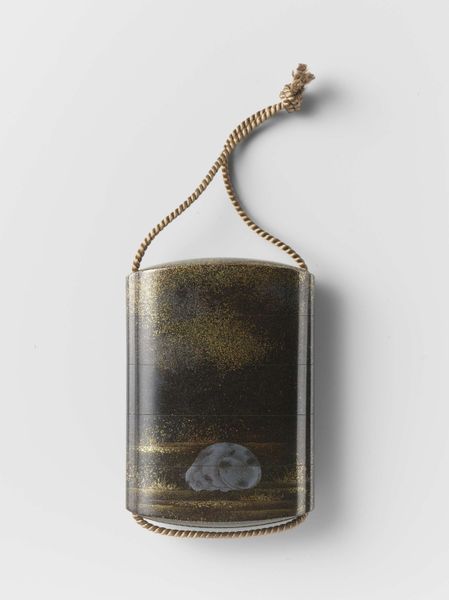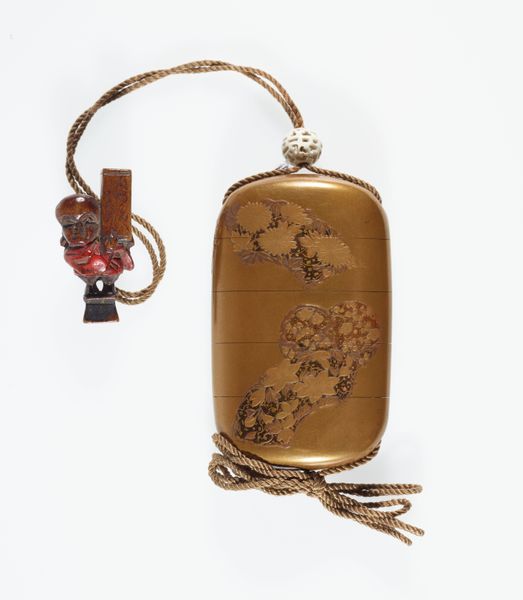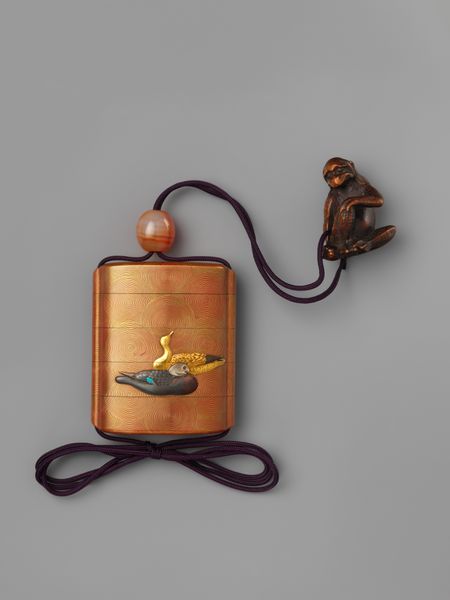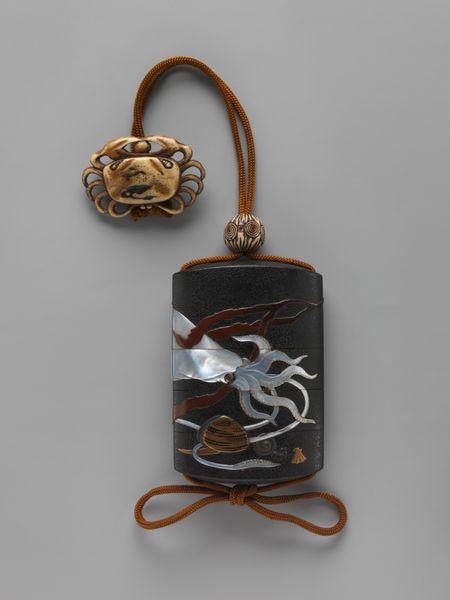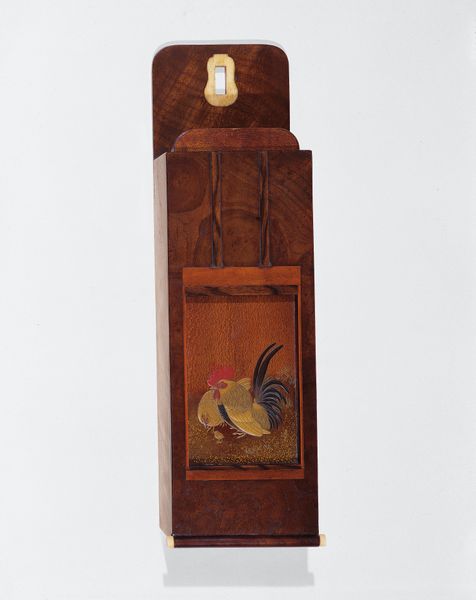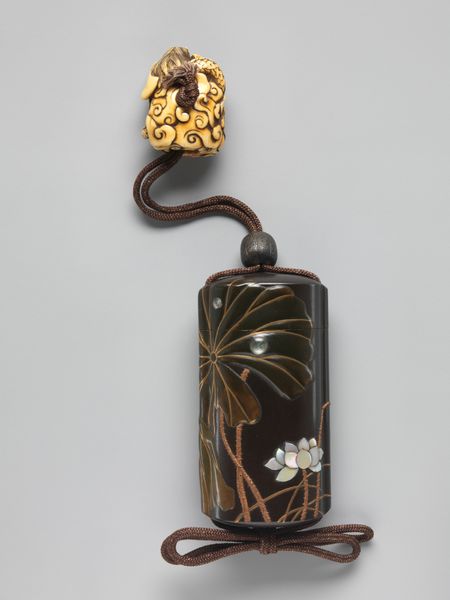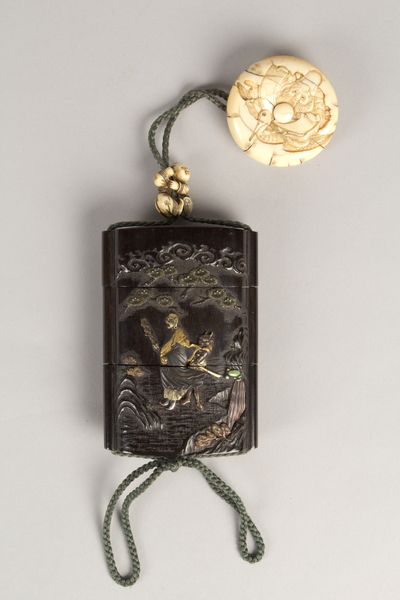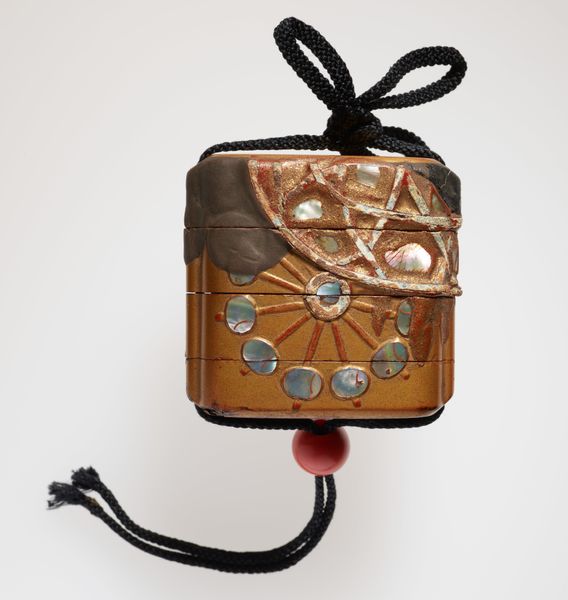
print, wood, ivory
#
boat
#
narrative-art
# print
#
asian-art
#
ukiyo-e
#
japan
#
wood
#
ivory
#
miniature
Dimensions: 3 7/16 x 2 1/16 x 13/16 in. (8.7 x 5.3 x 2 cm)
Copyright: Public Domain
Curator: This is an Inrō with Treasure Boat, dating back to the 19th century, attributed to Kajikawa Bunryūsai. The piece combines various materials, including wood and ivory, a showcase of meticulous craftsmanship from Japan. Editor: Immediately, I'm struck by its size. It feels like a captured dream, a tiny epic. There's a tension between the dark, turbulent sea and the cozy warmth emanating from the treasure boat. Curator: Inrō like this served as portable cases, often used to carry seals or medicines. Their intricate designs also acted as status symbols. Here, the treasure boat, or Takarabune, motif draws from Japanese folklore, representing the Seven Lucky Gods arriving with gifts for the new year. The patronage of this imagery reveals the socio-economic needs for reassurance during the Edo period, the need to control the perception of access to fortune, safety, and good health. Editor: Knowing that shifts my perspective. It's not just decorative; it’s practically an amulet of hope on your hip. And the craftsmanship, incredible! To render that sense of vast ocean and rich detail in miniature—that speaks to the artisans' dedication and culture in general. Is the wave gilded or bronzed? Curator: It appears to be gilded. The use of gold emphasizes the precious nature of the contents it would hold, aligning wealth with its artistic depiction. Further, these images often coincided with the theatrical performances centered around moralizing tales and reinforcing Shogunate values of peace through profit. Editor: Right. And I bet wearing such a piece opened conversations, became a prompt to talk of legend. Do you see the tiny figures, are those mice onboard the boat? Curator: Yes, those are indeed mice. It's been posited that mice and their association with Daikoku, the god of wealth, and is a symbol of abundance, reinforcing the theme of prosperity. This Inrō beautifully exemplifies how objects functioned not merely practically, but as vehicles of cultural expression and meaning. Editor: It gives such pause for reflection. I love how it’s functional and steeped in myth and meaning— a little poem you carry around. It challenges our own notions of ‘art’ being somehow separate from everyday life. It shows how interwoven creativity can be within cultures of the past. Curator: I completely agree. Analyzing the artifact, it demonstrates the crucial ways art can become instrumental in maintaining the economic and social frameworks. Editor: Beautifully put, indeed. A story, an object, a system...all in a little lacquered box.
Comments
No comments
Be the first to comment and join the conversation on the ultimate creative platform.

